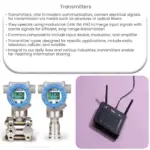Explore the workings, types, applications, and emerging trends in pressure sensor technology in our comprehensive guide.

Understanding Pressure Sensors
A pressure sensor is an instrumental device used to measure the pressure of gases or liquids. They are often referred to as pressure transducers, pressure transmitters, pressure senders, pressure indicators, piezometers, and manometers. These sensors play a critical role in a wide range of applications across different industries.
How Do Pressure Sensors Work?
Pressure sensors work on the principle of converting the physical parameter (pressure) into a standard signal that can be measured electrically. The sensor employs a pressure-sensitive element that deforms when exposed to a certain pressure. This deformation is then converted into an electrical signal by a secondary element.
Types of Pressure Sensors
Applications of Pressure Sensors
Pressure sensors have a vast range of applications across various industries, including:
With the advancement in technology, pressure sensors are becoming more sophisticated, smaller in size, and highly accurate. This continual evolution, driven by the increasing demand for pressure sensing in various fields, is set to pave the way for more innovative applications and improved designs in the future.
Emerging Trends in Pressure Sensor Technology
In recent years, we have seen numerous advancements in pressure sensor technology, owing to the growing demand for more accurate, reliable, and cost-effective devices.
Choosing the Right Pressure Sensor
Selecting the appropriate pressure sensor for a specific application can be a challenging task. Here are a few key considerations:
Conclusion
In conclusion, pressure sensors are integral to numerous applications across various industries. They offer valuable data that aids in monitoring and controlling processes, ensuring safety, and improving efficiency. With the continuous technological advancements, we can expect the development of more sophisticated, versatile, and compact pressure sensors, capable of meeting the diverse needs of future applications.



